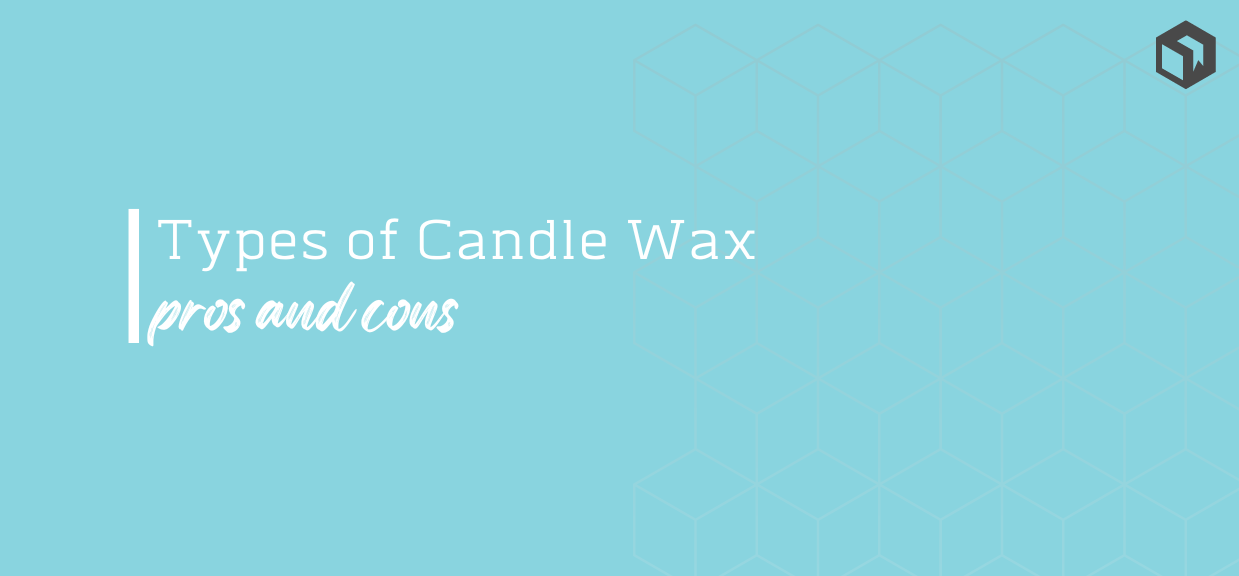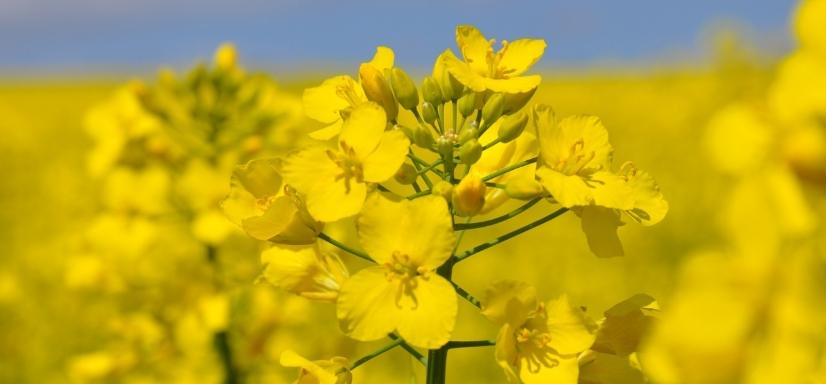Types of Candle Wax: Pros and Cons
We discuss the pros and cons of different waxes commonly used in candle making, so you can choose the best one for your products with confidence.

When it comes to candle making, there are a few different types of waxes that can be used. Each type of wax has its own unique set of pros and cons. In this article, we will discuss the most common types of candle waxes and their respective pros and cons.
It can be overwhelming when it comes to choosing wax for your homemade candles, as there are so many to choose from. Each type of wax has different properties that can impact the look, feel and burn of your candle so it’s wise to be familiar with the options so you can choose the best wax for your product.
Candle wax is made with various ingredients, such as coconut, soy, and beehives. Each type of wax has its special properties, as some are synthetic and others are natural.
Each type of candle wax has its own pros and cons, so there is no “best” one to use however there are several popular choices that we’ll discuss below.
Need to get your raw material and product inventory under control?
Try Craftybase - the inventory and manufacturing solution for DTC sellers. Track raw materials and product stock levels (in real time!), COGS, shop floor assignment and much more.
It's your new production central.
Soy wax

This vegetable wax is made from harvested soybeans that have been cleaned, cracked, and rolled. Soybean oil is then extracted and hydrogenated to create soy wax. This natural wax is ready made for candle making and popular for container candles.
Soy wax is known to hold fragrances well, making it a good type of wax for scented candles. It is also widely available, affordable, environmentally friendly and smokeless, making it one of the better wax types for candle making.
However, this wax does not hold and dissolve pigments and thus will create pastel shades rather than create bold colors.
In addition, soy wax can be quite soft, so it is not recommended to use in pillar candles.
Soy Wax Pros and Cons:
Pros:
-
Soot free
-
All-natural
-
Clean burning
-
Good fragrance throw
-
Available
-
Inexpensive
-
Environmentally friendly
Cons:
-
Not good for pillar candles
-
Can be soft
-
Will not hold color
Beeswax

Also known as honeycomb, beeswax is harvested from beehives, melted, and then fit into blocks, sheets, and pastilles. This form of wax comes in various shades, including gold, white and yellow.
While beeswax is not vegan friendly, it is natural and versatile, working well to create homemade candles. As they are sourced from honeycombs, it gives off a sweet fragrance when lit.
Beeswax candles are also known to “clean the air”, by neutralizing pollutants in the air.
On the downside, beeswax is a more expensive wax type than soy wax and paraffin wax.
While it has a natural sweet scent, it does not hold fragrances as well as other types, so adjustments need to be made when calculating fragrance loads for your candles.
Beeswax Pros and Cons:
Pros:
-
Natural
-
Soot free
-
Works well in candles
-
Can “clean the air”
-
Has a natural sweet scent
Cons:
-
Not vegan-friendly
-
More expensive
-
Doesn’t hold fragrances well
Coconut Wax

Coconut wax is made from hydrogenated coconuts and is a relatively new wax. This wax, when melted, creates a creamy and soft texture, similar to coconut oil. Coconut wax also has an odorless scent, which is a plus if you do not like the scent of coconuts.
The use of coconut wax has become increasingly popular, due to its scent throw, even burn and eco-friendliness. However, as this wax is still new to the market, it is difficult to find.
Coconut Wax Pros and Cons:
Pros:
-
Clean burning
-
Good fragrance throw
-
Eco-friendly
-
Holds color
-
Soot free
-
Even burn
Cons:
-
New to the market
-
Difficult to find
-
Can be more expensive
Palm Wax

Similar to soy wax, this wax is made and processed from palm. This is a hard wax, making it good for pillar candles and votive candles. Once dry, this wax creates unique crystal-like patterns on the surface. Consider using palm wax if you intend to add color and fragrances to your candles, as it holds pigments and fragrances well.
The production of this wax, however, has been said to produce big environmental issues, due to the deforestation of palm trees to create palm oil and wax. The result of deforestation has shown a dramatic impact on biodiversity while contributing to CO2 emissions.
Thus, if you are looking for a more eco-friendly wax, you might want to steer clear of using palm wax.
Palm Wax Pros and Cons:
Pros:
-
Holds color
-
Good fragrance throw
-
Unique crystal patterns
Cons:
-
Has a large environmental impact
-
Can be difficult to find
-
More expensive
Paraffin wax

Paraffin is one of the most common and widely used candle wax. This wax is synthetic, made with petroleum, coal, or shade oil. It is also versatile for candles and known for its opacity, lack of odor and consistent burn qualities.
This type of wax is affordable and easy to use. As it has different melting points, paraffin wax can be used for various types of candles including pillar candles, votive candles, and taper candles.
However, paraffin wax is not the healthiest and eco-friendliest wax out there. as this wax is made from petroleum, it creates carcinogenic smoke and soot which is toxic for humans.
If you are looking for a more environmentally friendly option, soy wax or beeswax may be a better choice.
Paraffin wax Pros and Cons:
Pros:
-
widely available
-
affordable
-
easy to use
-
versatile
-
consistent
Cons:
-
not eco-friendly
-
not healthy
Rapeseed Wax

Coming from the plant itself, rapeseed wax is able to retain fragrances and has a long burn time. While it is also new to the market, various brands have already adopted this wax as an alternative to soy wax.
As intensive farming techniques are not used to produce this wax, it is a sustainable, biodegradable, and more eco-friendly alternative to other waxes. This wax also does not produce soot or smoke, making it less toxic than other waxes such as paraffin wax.
Rapeseed Wax Pros and Cons:
Pros:
-
Good fragrance throw
-
Eco-friendly
-
Long burn time
-
Soot free
Cons:
-
New to the market
-
Difficult to find
-
Can be more expensive
Considerations when choosing candle wax for your candle
There are many pros and cons to consider when choosing a type of wax for your candle.
Some factors you may want to consider include:
-
Smokeless burn
-
Natural wax
-
Eco friendly
-
Scent throw
-
Burn
On top of these factors, also take into account the type of candle you would like to make, as certain waxes may suit certain candle types better than others.
Alternatively, try blending various candle waxes for your candle. There are various different blends to choose from, with the most common being soy and paraffin.
Other blends include:
-
Soy and palm wax
-
Coconut and beeswax
-
Beeswax, coconut and soy wax
Combining various blends can give you the best of both worlds. For example, blending coconut wax with soy wax can give you a creamy texture while providing a long burn time.
Final thoughts
Ultimately, the best candle wax for candle making will depend on what you are looking for in your candle. Each wax contains different properties, and not all waxes are suitable for all types of candles. Try experimenting with various wax blends to see which wax will suit your candle.
Candlemaking software helps you track your Waxes
Candle making is a fun and rewarding hobby, but it can be difficult to keep track of all the different waxes you use. Candle making software can help you manage your wax collection and ensure you always have the right wax on hand for your next project.
Craftybase is inventory management software designed specifically for crafters and makers. With Craftybase, you can easily track your wax collection, as well as all the other materials you use for candle making.
Craftybase also lets you know when you need to reorder wax, so you never have to worry about running out of supplies.
Try Craftybase free for 14 days and see how easy it is to manage your candle making business.
